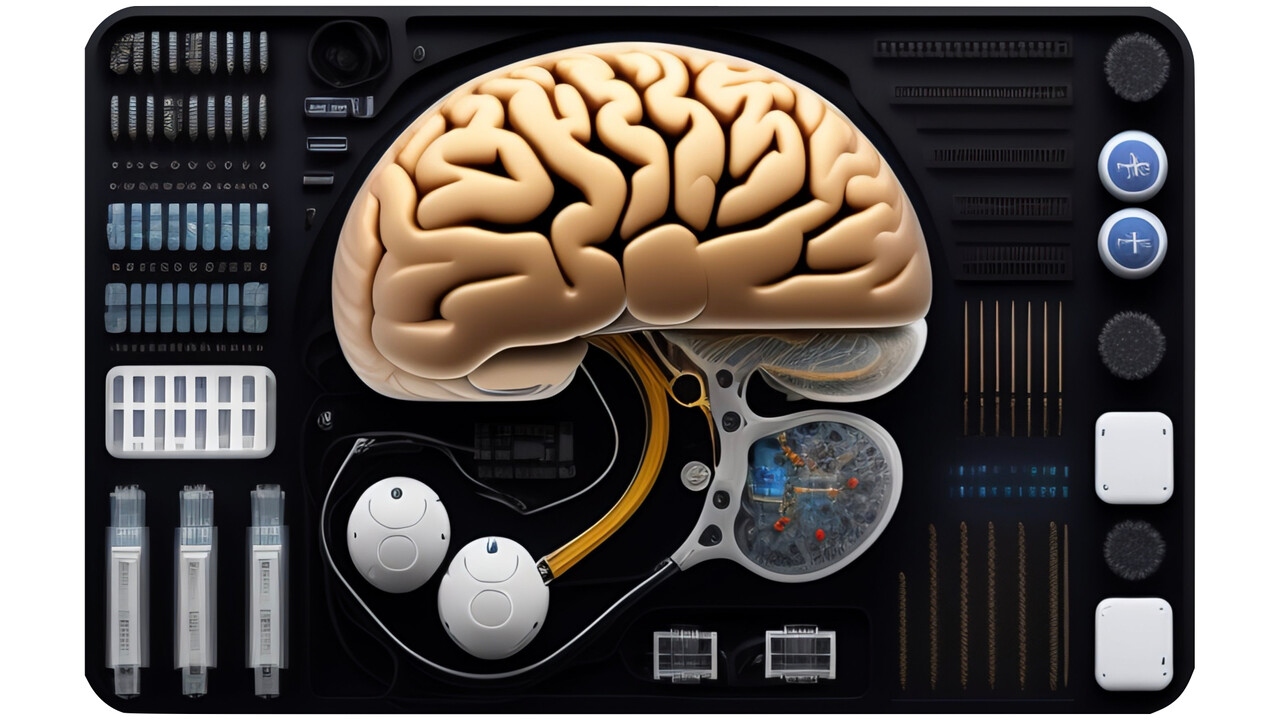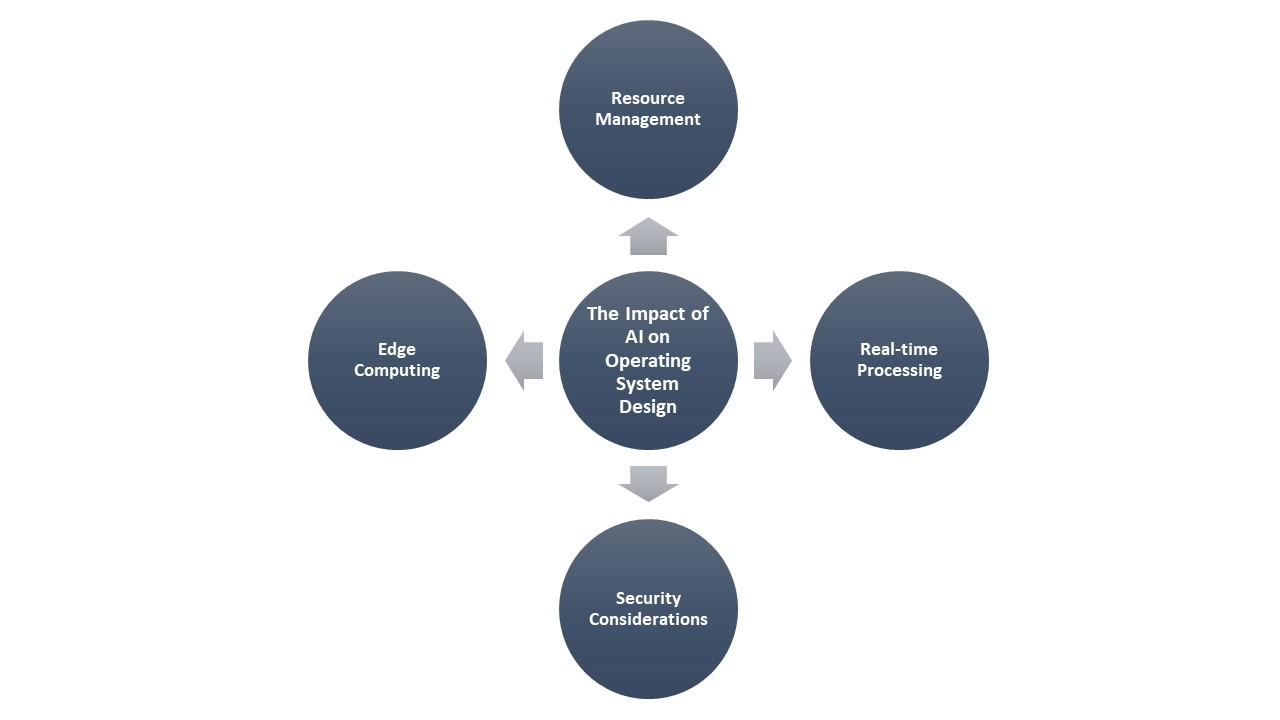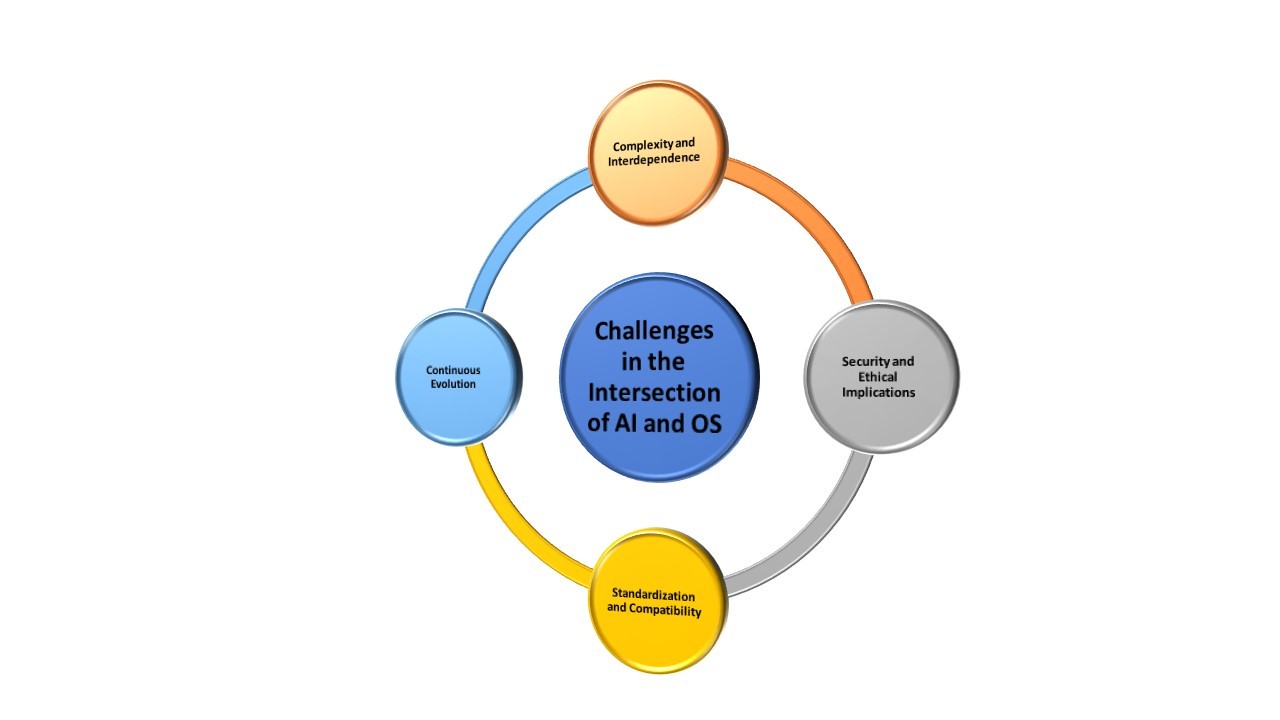Comments
- No comments found

Artificial Intelligence (AI) and Operating Systems (OS) represent two cornerstones of modern computing.
As technology advances, the synergy between AI and OS design becomes increasingly crucial. The main aim of this post is to explore the symbiotic relationship between these two fields, examining how AI influences OS design and vice versa. We'll examine the historical evolution, current trends, challenges, and potential future directions in the intersection of AI and OS.

Early Days
The history of AI dates back to the mid-20th century when pioneers like Alan Turing laid the theoretical groundwork. Initially, AI research focused on symbolic AI, where rule-based systems attempted to emulate human intelligence. Concurrently, early computers operated on basic batch processing systems, lacking the sophistication required for AI integration.
Rise of Machine Learning
As computing power increased, so did the complexity of AI algorithms. Machine learning (ML) emerged as a paradigm shift, allowing systems to learn from data rather than relying on explicit programming. This shift coincided with the development of more sophisticated operating systems, introducing features like multitasking, virtual memory, and file systems.
Parallel Advancements
The 1990s witnessed the rise of graphical user interfaces (GUIs) in operating systems, making computing more accessible. Simultaneously, AI research experienced renewed interest with advancements in neural networks and computational capabilities. However, the two fields largely operated independently during this period.
Convergence in the 21st Century
The 21st century brought about a convergence of AI and OS design. Operating systems evolved to accommodate the resource-intensive nature of AI applications, providing support for efficient task scheduling, resource allocation, and parallel processing. This convergence marked the beginning of a new era in computing.

Resource Management
AI applications often demand substantial computational resources. Modern operating systems have adapted to this challenge by implementing advanced resource management techniques. Dynamic resource allocation, prioritization of AI tasks, and efficient memory management have become integral to optimizing system performance.
Real-time Processing
Some AI applications, such as autonomous vehicles and industrial automation, require real-time processing capabilities. Operating systems have responded by incorporating real-time features, ensuring timely execution of critical AI algorithms. This is particularly evident in embedded systems and specialized OS variants designed for specific AI applications.
Security Considerations
The integration of AI introduces new security challenges. Adversarial attacks targeting AI models pose a threat, and operating systems play a crucial role in mitigating these risks. Security features such as secure boot, isolation of AI processes, and regular software updates have become essential components of AI-aware operating systems.
Edge Computing
The proliferation of edge computing, where data processing occurs closer to the source of data generation, has further shaped OS design. Edge devices often host AI models for tasks like image recognition or natural language processing. Optimizing operating systems for low-latency, high-throughput edge computing has become a priority.
Reciprocal Influence: How OS Design Shapes AI
Hardware Abstraction
Operating systems provide a layer of abstraction between hardware and applications. This abstraction is critical for AI development, allowing AI algorithms to run on diverse hardware architectures seamlessly. OS design choices, such as device driver support and hardware abstraction layers, significantly impact AI's portability across different platforms.
Middleware and Framework Support
AI frameworks and middleware, such as TensorFlow and PyTorch, rely on OS-level functionalities for efficient execution. Operating systems must provide the necessary interfaces and optimizations to support these frameworks. Conversely, the popularity of specific AI frameworks can influence OS design decisions, shaping the direction of future OS features.
Scalability and Distributed Computing
As AI applications scale in complexity, the need for distributed computing architectures becomes evident. Operating systems play a crucial role in enabling scalable and distributed AI systems. Support for cluster computing, distributed file systems, and inter-process communication are key aspects of OS design that directly impact the scalability of AI applications.
Energy Efficiency
The energy efficiency of computing systems is a growing concern, particularly with the rise of AI in mobile devices and IoT applications. Operating systems must incorporate power management strategies, optimizing resource utilization without compromising AI performance. This focus on energy efficiency is reshaping OS design principles and influencing hardware specifications.

Complexity and Interdependence
The integration of AI and OS introduces a new level of complexity. AI algorithms often have unique requirements, and adapting operating systems to meet these needs without sacrificing general-purpose functionality poses a challenge. Striking the right balance between flexibility and specialization is an ongoing concern.
Security and Ethical Implications
The deployment of AI introduces novel security challenges, with potential vulnerabilities in AI models and data. Operating systems must address these concerns through robust security measures. Additionally, the ethical implications of AI, such as privacy concerns and biased algorithms, necessitate OS-level interventions to ensure responsible AI development and deployment.
Standardization and Compatibility
The diversity of AI hardware and software ecosystems poses challenges for standardization. Operating systems must navigate this landscape to provide a unified experience for developers and end-users. Compatibility issues between AI frameworks, middleware, and operating systems require careful consideration to facilitate seamless integration.
Continuous Evolution
Both AI and OS technologies are rapidly evolving. Keeping pace with the latest advancements in AI models, hardware architectures, and OS design principles requires continuous adaptation. Operating systems must be designed with extensibility in mind, allowing for the integration of future AI innovations without major overhauls.

Neuro-Inspired Computing
The exploration of neuro-inspired computing, drawing inspiration from the human brain's architecture, is a promising avenue for the future. Operating systems tailored for neuro-inspired hardware could revolutionize AI processing, potentially leading to more efficient and adaptable systems.
Quantum Computing Integration
As quantum computing technologies mature, the integration of quantum processors into computing systems will impact both AI and OS design. Quantum-aware operating systems may become essential for harnessing the full potential of quantum-enhanced AI algorithms.
Explainable AI and Transparency
Addressing the interpretability of AI models is a critical aspect of future development. Operating systems may play a role in providing tools and interfaces for understanding AI decision-making processes. Transparency in AI algorithms could become a fundamental requirement, influencing OS design choices.
Enhanced Edge Computing Capabilities
The trend towards decentralized computing and edge AI is likely to continue. Operating systems will need to enhance their edge computing capabilities, providing efficient support for AI workloads on resource-constrained devices while maintaining security and reliability.
The intersection of Artificial Intelligence and Operating System design represents a dynamic and evolving landscape. From resource management and security considerations to scalability and ethical implications, the symbiotic relationship between AI and OS has far-reaching implications for the future of computing. As we venture into an era where AI becomes increasingly integral to our daily lives, the collaboration and innovation at the intersection of these two fields will continue to shape the technological landscape in profound ways. The journey towards more intelligent, efficient, and secure computing systems is one that AI and OS designers embark upon hand in hand.
Ahmed Banafa is an expert in new tech with appearances on ABC, NBC , CBS, FOX TV and radio stations. He served as a professor, academic advisor and coordinator at well-known American universities and colleges. His researches are featured on Forbes, MIT Technology Review, ComputerWorld and Techonomy. He published over 100 articles about the internet of things, blockchain, artificial intelligence, cloud computing and big data. His research papers are used in many patents, numerous thesis and conferences. He is also a guest speaker at international technology conferences. He is the recipient of several awards, including Distinguished Tenured Staff Award, Instructor of the year and Certificate of Honor from the City and County of San Francisco. Ahmed studied cyber security at Harvard University. He is the author of the book: Secure and Smart Internet of Things Using Blockchain and AI.
Leave your comments
Post comment as a guest